By Danielle Prieur and Neil Murthy
T
his is a tale of two clinics.
At first glance, it may seem that Drs. Robert Krueger and Susana Torres share much in common.
Both are dentists in the Chicago area who have practiced for many years. Both have a passion for their profession and share a special concern for caring for the oral health care needs of children.
But the patient populations each dentist sees are polar opposites.
Krueger has practiced for 40 years in Evanston. During his long clinical career, he said that he has seen the rate of cavities dramatically decline to the point that he believes that there are a lot fewer things to do now in his clinic.
“Parents are more educated and know what they need to do,” Krueger explained. “They keep their kids away from soda and candy. There’s little if any tooth decay in the last two generations of children.”
For Torres, however, the situation is entirely different.
“In reality, [dental education] is a pretty big problem,” Torres explained. “Patients don’t know to brush twice. They only brush once.”
Torres practiced dentistry in Humboldt Park and now works at Norwegian American Hospital. She often makes rounds in a dental van to low-income areas of the city to provide care. She stated that she frequently performs fillings for school-age children, many of whom are underinsured or uninsured.
And that is the problem dividing these clinics: the patients coming in have vastly different frequencies of cavities.
According to the Martin Prosperity Institute at the University of Toronto, Chicago ranked among the top ten cities in the nation for socioeconomic disparities. Researchers at the Sinai Health Institute in Chicago found that health disparities have widened for 11 out of 15 health status indicators, including diabetes, cancer and heart disease. The results were published in the American Journal of Public Health in February 2010.
Adding to the litany of injustices, oral health status might be yet another indicator showcasing the marked health disparities affecting the city’s population.
The Problem
Ask Chicagoans what they think about the great divide between the city’s affluent and impoverished neighborhoods, and you will likely not hear about cavities. Although not as well publicized as other public health concerns, a group of Chicago-area health professionals, known as the Chicago Community Oral Health Forum, have documented these oral health disparities.
In 2011, the forum published a comprehensive study of dental health in Chicago called, “The Burden of Oral Disease in Chicago.” In it, they outlined several problems with poor dental health. Three in particular stand out, all of which were related to poor dental health in low socioeconomic areas.
First, Chicago was “worse than national indicators” when it came to the number of cavities both treated and untreated in third graders.
Healthy People 2020 Oral Health Objectives
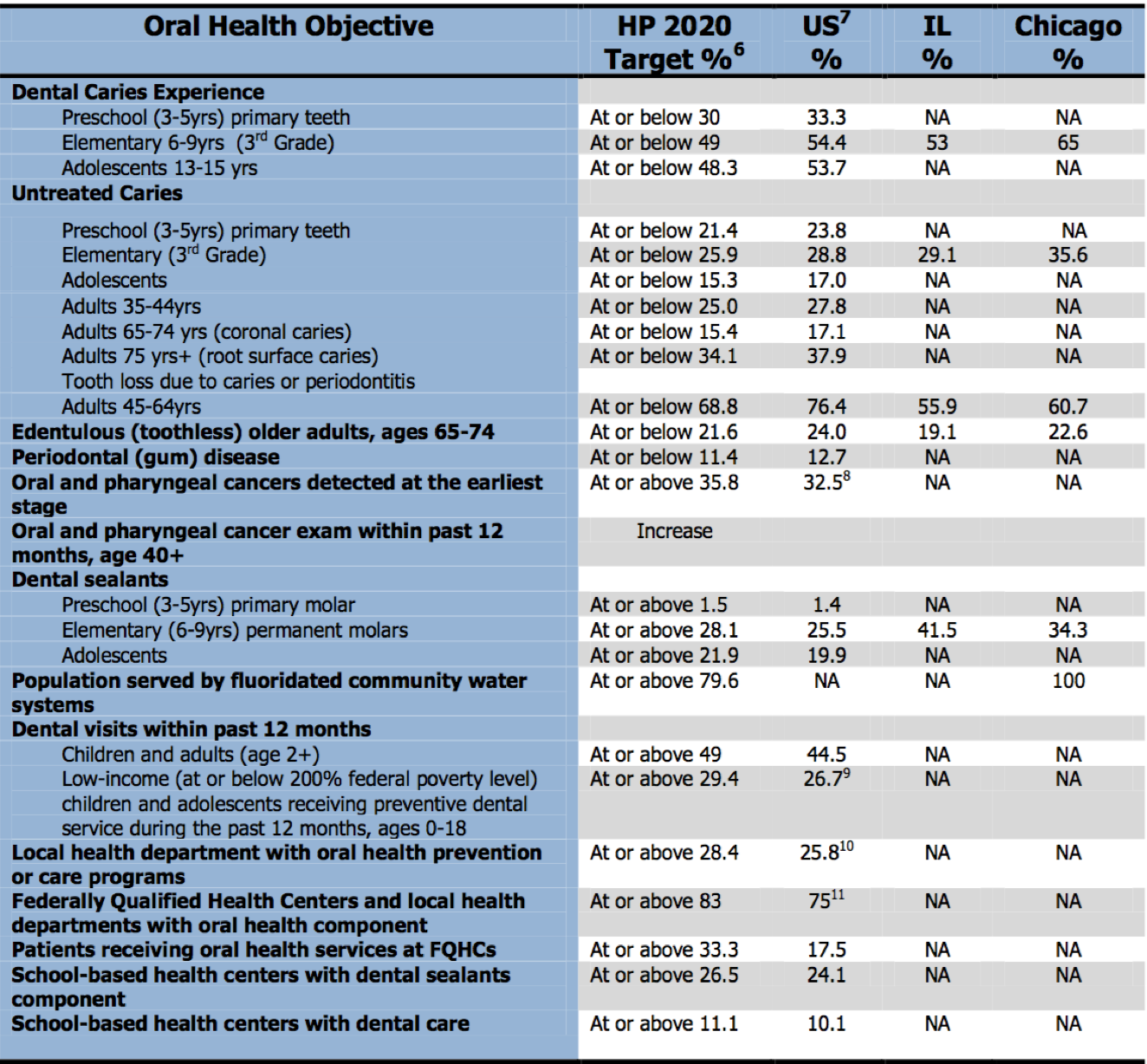
Second, Chicago did not have enough clinics to treat patients in low socioeconomic areas. In 2010, there were only 66 dental clinics for the city’s 753,281 Medicaid enrollees, resulting in only one dental clinic exists for every 11,400 patients.
Third, only 54 percent had some form of dental insurance.
The American Dental Association has found the state of Illinois reimburses only a third of the work that dentists do, compared with a national average of nearly 50 percent. For adults covered by Medicaid, the program does not include basic preventive services, such as teeth cleanings and sealants, and periodontal services.
Last year, the Oral Health Community Forum conducted a follow-up study of dental health and obesity, entitled “Healthy Smiles, Healthy Growth,” focusing on third graders in Illinois public schools.
Although many of the dental health problems in the original 2011 study had improved, including the number of untreated cavities, the researchers found that the percentage of third graders in need of urgent dental treatment was higher than national averages.
Illinois Progress Toward Healthy People 2020 Objectives
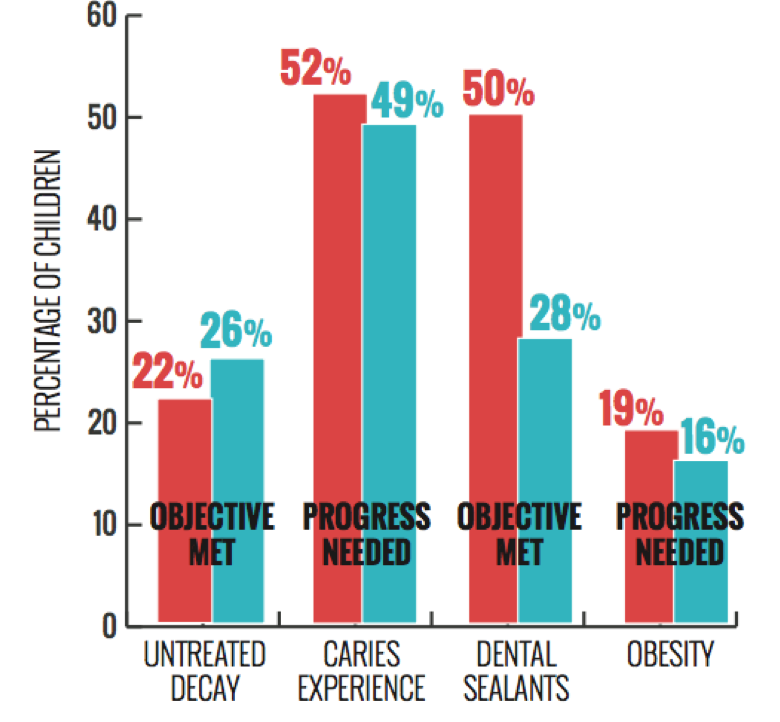
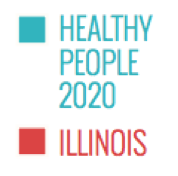
The researchers made a correlation between high percentages of third graders who needed urgent dental treatment with race as well as low income.
“The proportion of children affected by untreated decay differs for racial/ethnic minority groups as well as for children from low income families in Illinois. Overall, 19 percent of white, 21 percent of Latino, 27 percent of Asian, and 29 percent of African-American third graders are affected by untreated decay,” the report said.
Percentage of Illinois Third Graders with Untreated Decay,Treated Decay, and Cavities


Researchers also found a correlation between urgent dental treatment need and students who were part of the Free and Reduced Meal Program.
“In the same way, 26 percent of children eligible for Free and Reduced Meal Program had untreated decay as compared [with] 16 percent of non-eligible children.”
Oral Health Status of Illinois Third Graders by Eligibility for FRMP

![]()
Still, access to dental care is at the top of the list of problems patients face.
“There are many areas of the city where there are not a lot of dentists and in those communities the number that will take [Medicaid] patients are low and reimbursement is very low,” said James Alexander, executive director of Chicago-based Otho S. A. Sprague Memorial Institute.
The institute is a philanthropic organization engaged in public health advocacy efforts in Chicago. The institute funds the work of the Oral Community Health Forum.
Geographic Distribution
The Chicago Health Atlas is an online tool that provides digitized public health data, based on information obtained from the Chicago Public Health Department and local hospitals. Each map shows the geographic spread of conditions experienced by the city’s various communities.
The maps of Chicago all point to one stark reality: the great divide between the city’s haves and have-nots. Each map bears an uncanny resemblance to the other. Communities that have a scarcity of supermarkets, known as “food deserts,” seem to correlate with communities that have a dearth of dentists.
Percent of households under the poverty level for the years 2007-2011

Practicing dentists per 1,000 residents by Chicago community area in 2010
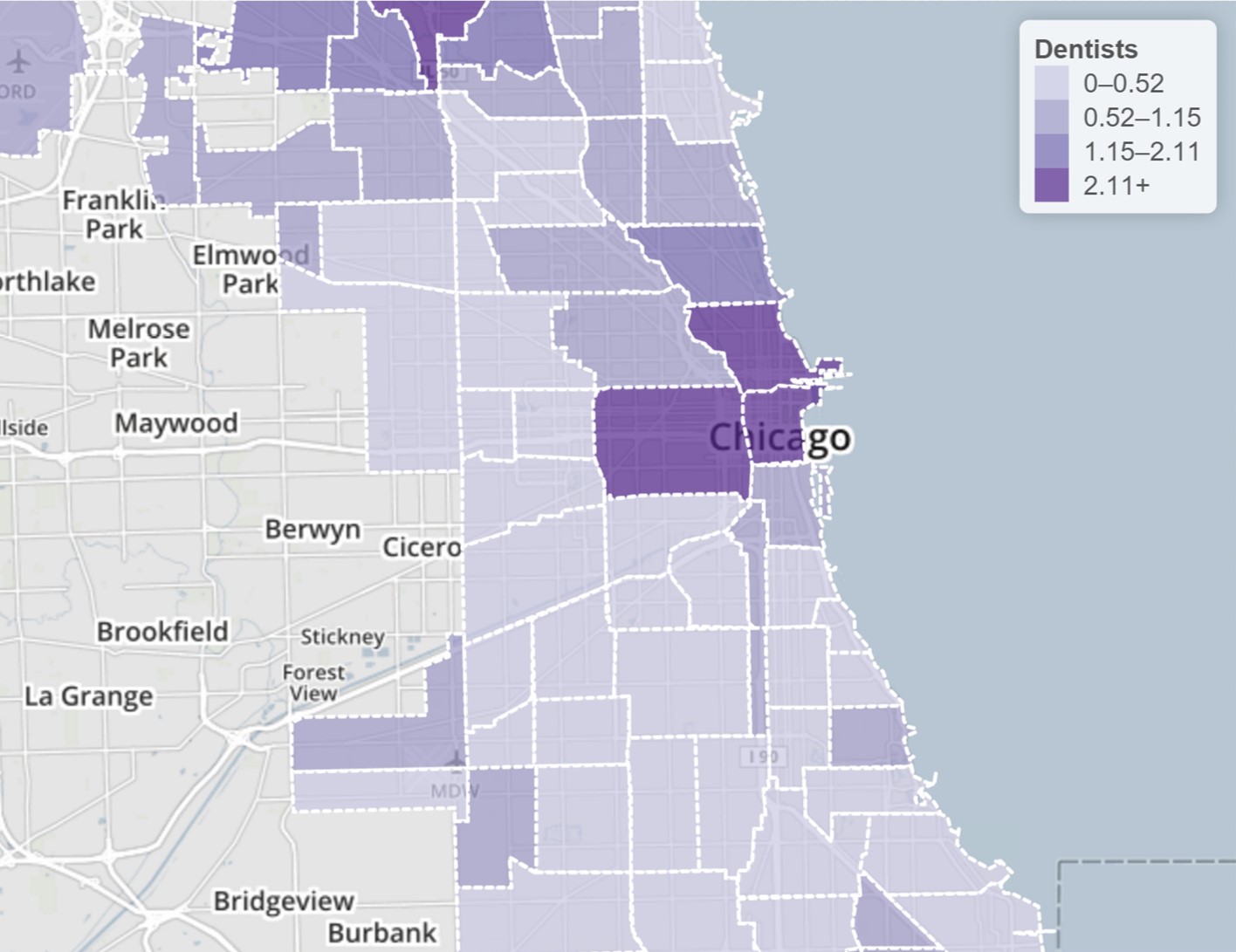
Food Desert Map
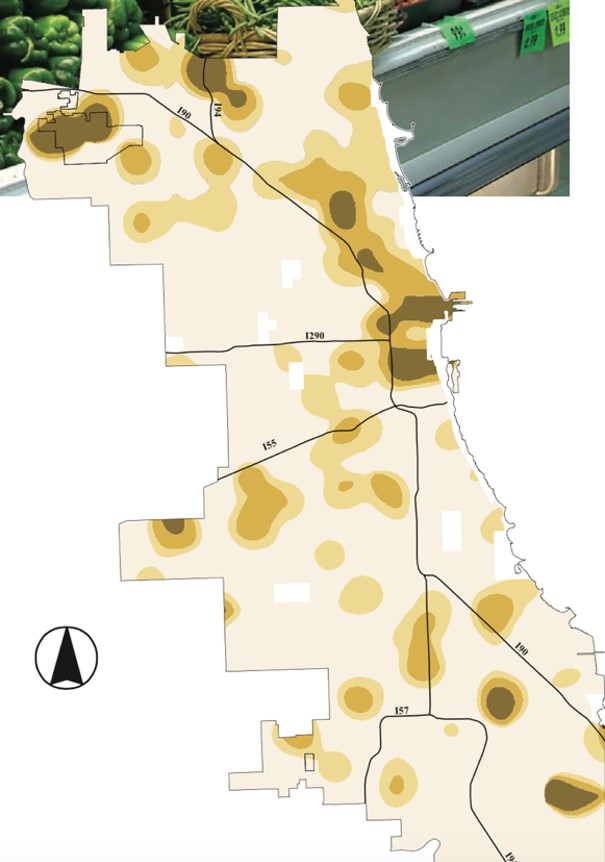

The Solution
Despite the significant burden of oral health disparities, the Community Oral Health Forum reports provided one ray of hope: untreated tooth decay decreased from 30 percent to 22 percent among improved third-grade students over the past decade.
Dr. Mona Van Kanegan, co-founder and co-director of the forum and contributing author on both reports, said that the reason dental health has improved for pediatric patients is that the Chicago Public School system implemented a mandatory dental screening program.
She said school-based programs have been successful because it is easy for parents to sign a form to provide children access to care.
Students can get access to emergency dental care through the Chicago Public Schools.
“We have a case manager program funded by the institute that helps to connect kids [to dental care], to first inform the parent of the need and then looks to community resources,” Van Kanegan said.
Alexander said another key aspect of these programs has been raising awareness among both parents and children about the importance of dental education.
“Chicago’s preventative strategy is putting fluoride in the water, but many families don’t drink water from the tap.”
Even if patients were better informed, however, one of the largest obstacles is the lack of healthy food options in low-income areas. Residents in these areas, known as “food deserts,” must resort to convenience stores filled with sugary snacks instead of grocery stores stocked with fresh fruits and vegetables.
In order to combat this lack of dental knowledge, the Supplemental Nutrition Assistance Program spends about $500,000 a year educating food stamp users about healthy eating. The city also has implemented a food truck program that makes healthy food more available in low-income communities.
“It’s not just what’s available, but what people ask for. If we are able to change the perspective of consumers, we can eliminate food deserts,” said Dr. Jonathan Shenkin, clinical associate professor at Boston University School of Dental Medicine. He argued that if consumers are educated about healthier food choices and have access to them, oral health would improve substantially.
Ultimately changes in access to dental care will solve the problem of poor dental health among low-income patients, Shenkin conceded.
“Once they’re diagnosed, getting them treatment is still a major concern,” he said.Although Van Kanegan is hopeful that access for
Although Van Kanegan is optimistic that access for low-income adults might improve with impending changes in the Medicaid system. But she said budget cuts might limit school dental exam programs. In turn, she said this might determine whether Chicago can meet the Healthy People 2020 Goals set by the U.S. Department of Health and Human Services.
In the meantime, dentists such as Krueger and Torres continue to treat two different patient populations. A tale of two clinics will continue until access and education become a reality for everyone.


